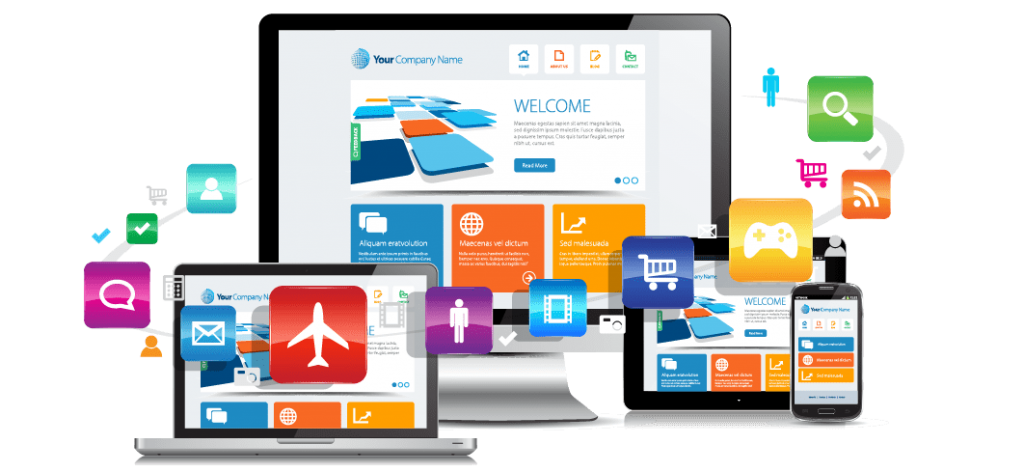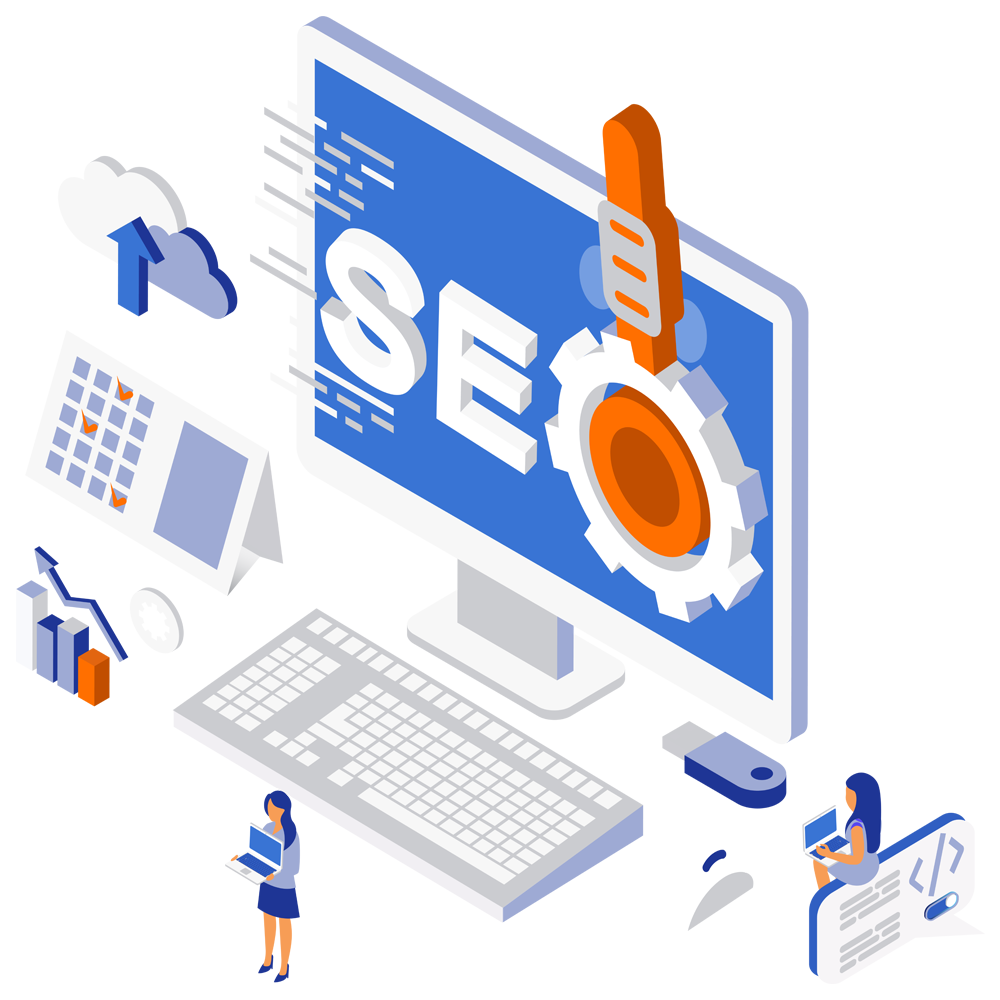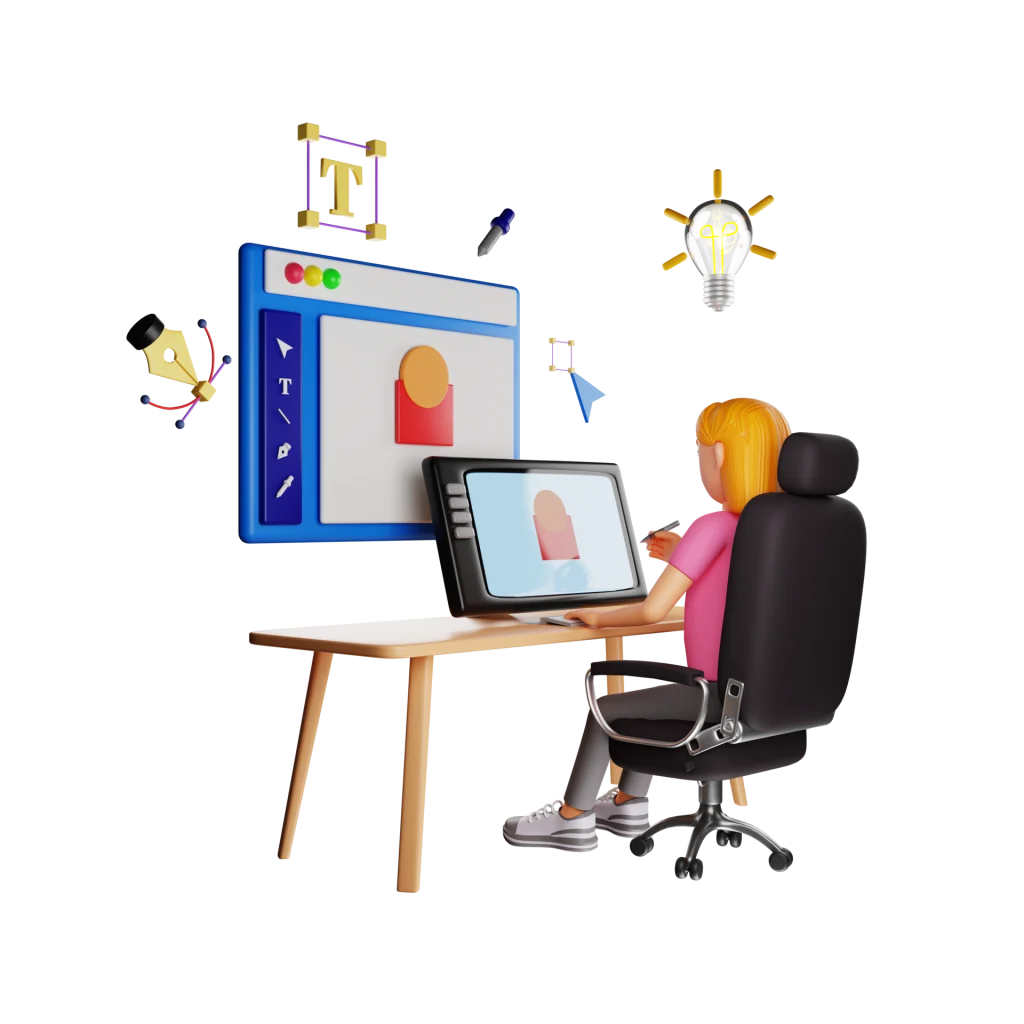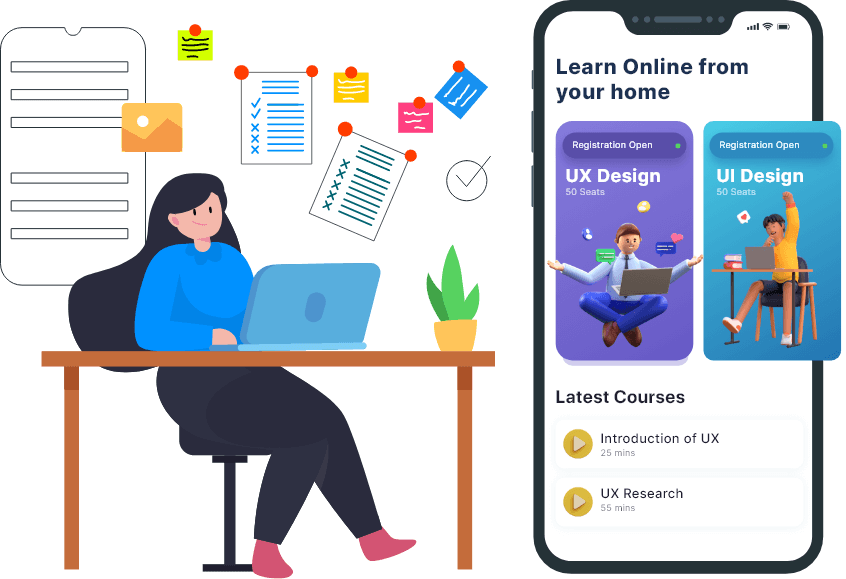Services
- OUR SERVICES
Crafting digital solutions tailored to your unique business needs.
WEBSITE DESIGN & DEVELOPMENT
Website Design & Development refers to the comprehensive process of creating and maintaining websites, encompassing both the aesthetic elements (design) and the technical aspects (development). This involves: Custom Website Design: Crafting unique, visually appealing layouts that reflect a brand’s identity and enhance user experience. Responsive Design: Ensuring websites are mobile-friendly and look great on all devices. Front-End Development: Building interactive and user-friendly interfaces using technologies like HTML, CSS, and JavaScript. Back-End Development: Developing robust server-side applications that manage databases, user authentication, and business logic. Content Management Systems (CMS): Implementing platforms like WordPress or Joomla that allow easy content updates and management. E-commerce Solutions: Creating online stores with secure payment gateways and user-friendly product management.
HTML
CSS
JQUERY
PHP
Laravel
ASP.net
WordPress
Shopify
WIX


SEARCH ENGINE OPTIMIZED (SEO)
Search Engine Optimization (SEO) is the process of improving a website's visibility and ranking on search engine results pages (SERPs) to attract more organic (non-paid) traffic. This involves a variety of techniques and strategies aimed at making a website more attractive to search engines like Google, Bing, and Yahoo. Key components of SEO include: Keyword Research: Identifying the most relevant and popular search terms that potential customers use to find products or services related to your business. On-Page SEO: Optimizing individual web pages to rank higher, including the use of keywords in titles, meta descriptions, headers, and content. Technical SEO: Improving the backend structure of a website to enhance its crawlability and indexability by search engines. This includes optimizing site speed, mobile-friendliness, and secure connections (HTTPS). Content Creation: Developing high-quality, relevant, and valuable content that engages users and encourages them to spend more time on the site. This can include blog posts, articles, videos, and infographics.
On-Page SEO
Link Building
SEO Audit
On-Site Optimization
Off-Site Optimization
KeyWords
Graphic Designing
Graphic Design is the art and practice of planning and creating visual content to communicate messages. It involves the use of typography, imagery, color, and layout to produce designs that inspire, inform, and captivate an audience. Graphic design is essential for creating a strong brand identity and enhancing the visual appeal of various media. Key aspects of graphic design include: Logo Design: Crafting unique and memorable logos that represent a brand’s identity and values. Brand Identity Design: Developing a cohesive visual identity for a brand, including logos, color schemes, typography, and other design elements. Print Design: Creating designs for printed materials such as brochures, business cards, posters, flyers, and packaging. Digital Design: Designing graphics for digital platforms, including websites, social media, email campaigns, and online advertisements. Illustration: Producing custom illustrations that enhance the visual appeal of various media and communicate complex ideas effectively.
Logo Designing
Branding
Social Posts
3D Arts
Email Templates
Brochure


MOBILE APP DEVELOPMENT
Mobile App Development is the process of creating software applications that run on mobile devices such as smartphones and tablets. This involves designing, coding, testing, and deploying apps for platforms like iOS (Apple) and Android (Google). Key aspects of mobile app development include: Concept and Planning: Defining the app’s purpose, target audience, features, and functionalities. This stage includes market research and feasibility studies. UI/UX Design: Creating intuitive and attractive user interfaces (UI) and user experiences (UX) that ensure ease of use and engagement. Development: Native App Development: Building apps specifically for a particular platform (iOS or Android) using platform-specific programming languages (Swift/Objective-C for iOS and Kotlin/Java for Android). Cross-Platform Development: Creating apps that work on multiple platforms using frameworks like React Native, Flutter, or Xamarin. Backend Development: Setting up server-side components, databases, and APIs to support app functionality, such as user authentication and data storage.
Flutter
Swift
Java
Android
iOS
React Native
Koltin
Dart
Python
SOCIAL MEDIA MANAGEMENT
Enhance your social media presence with our customized growth strategies. Engage Clients, Beat the Competition. Social Media Management is the process of creating, scheduling, analyzing, and engaging with content posted on social media platforms like Facebook, Instagram, Twitter, LinkedIn, and others. It involves a strategic approach to building and maintaining a brand’s presence on social media to achieve specific business goals. Key components of social media management include: Strategy Development: Goal Setting: Defining clear objectives such as brand awareness, engagement, lead generation, or sales. Audience Analysis: Understanding the target audience’s demographics, interests, and behaviors to tailor content effectively. Platform Selection: Choosing the most relevant social media platforms based on where the target audience is most active.
Post Creation
#tags
Blogs
Analytic Report
Paid Boosting
Social Covers & Profile


UI/UX DESIGN
UI/UX Design focuses on creating user interfaces and experiences that are both aesthetically pleasing and highly functional. This field combines aspects of design, psychology, and user research to ensure that digital products are easy to use and provide a satisfying user experience. Here’s a breakdown of its key components: User Interface (UI) Design UI Design is about the visual aspects of a product. It involves the look and feel, presentation, and interactivity of a digital product. Key elements include: Visual Design: Crafting the overall aesthetic of the interface, including color schemes, typography, icons, and imagery to create an appealing look. Layout Design: Arranging visual elements in a way that ensures a coherent and intuitive structure. This includes grids, spacing, and alignment to enhance readability and usability. Interactive Elements: Designing buttons, menus, sliders, and other elements that users interact with. Ensuring these elements are easy to use and provide clear feedback when interacted with. Consistency: Maintaining a consistent design language across the entire product to ensure a seamless user experience.
Adobe XD
Figma
Prototypes
Visual Designing
User Interface
User Experience
Video Editing
Video Editing Services involve the process of manipulating and arranging video footage to create compelling and polished content for various platforms. This includes importing and organizing raw clips, cutting and trimming unnecessary sections, adding transitions and effects, incorporating audio tracks and sound effects, and ensuring seamless synchronization. Professional video editing enhances visual storytelling, making content more engaging and effective in conveying its message. Whether for marketing, entertainment, or personal projects, expert video editing transforms raw footage into a cohesive, high-quality final product.
VideoEditing
VideoProduction
VideoMarketing
CinematicEditing
VideoEffects



